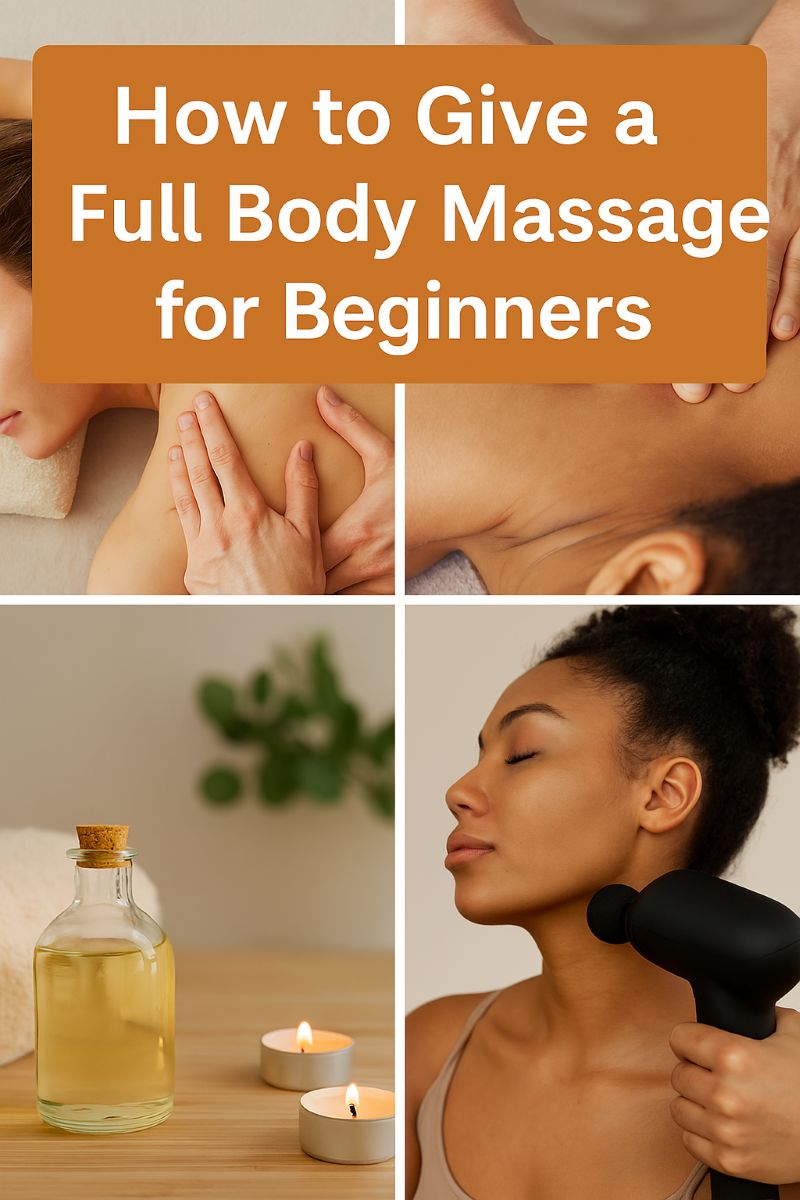
Giving your partner a full body massage at home isn’t just a kind gesture—it can strengthen your connection, ease everyday stress, and even improve sleep and mood. The best part? You don’t need formal training, a fancy table, or a spa setup. With a few simple techniques, a little prep, and genuine presence, anyone can give a relaxing and effective massage right at home.
This beginner’s guide walks you through everything you need to confidently deliver a full body massage, including helpful tips, a step-by-step routine, and suggested tools to enhance the experience.
Why Learn to Give a Full Body Massage?
Massage isn’t just about relieving physical tension. It’s about presence and touch—something that’s often missing in our fast-paced lives. Whether it’s a five-minute shoulder rub or a full session, a massage can:
- Relieve stress and promote deep relaxation
- Loosen tight muscles and increase circulation
- Reduce anxiety and support emotional well-being
- Improve sleep quality and mood regulation
- Create stronger physical and emotional bonds
- Offer a mindful, screen-free experience for both of you
It’s also incredibly cost-effective—spa-quality benefits without leaving home.
What You’ll Need to Get Started
You don’t need expensive tools. Just a little intention and the following basics:
Essentials:
- A quiet, warm space: A bed, yoga mat, or soft rug with pillows will do
- Massage oil: Sweet almond, grapeseed, coconut, or jojoba oils work great
- Towels or blankets: To protect your space from oils
- Relaxing music and dim lighting: Try soft instrumentals or nature sounds
- A pillow: For under the knees, ankles, or head
Optional Extras:
- At-home massage kits with oils, stones, and tools
- Handheld massagers like the Bob and Brad Massage Gun
- Thumb-saving tools like the Thumbsavers Advance
- Shiatsu-style massagers like the Invospa Neck and Back Massager
Creating the Right Environment
A calming setup enhances the entire experience. Try this:
- Dim the lights or light candles
- Turn off phones and distractions
- Play soft background music
- Diffuse essential oils or light incense
- Add pillows or rolled towels for comfort and support
Make sure your partner feels safe, warm, and supported—this sets the tone for everything.
Beginner-Friendly Full Body Massage Sequence
You don’t need to memorize dozens of strokes. Here’s a simple, effective routine:
1. Start with the Back
- Use long, gliding strokes (effleurage) from the lower back up to the shoulders
- Avoid the spine itself—work alongside it using your palms
- Knead the shoulders and upper back with your thumbs or knuckles
- Try slow circles with your palms to loosen muscle tension
2. Neck and Shoulders
- Use your thumbs to make small circular motions at the base of the skull
- Gently squeeze the trapezius muscles at the top of the shoulders
- Use both hands to alternate sides and ask for feedback on pressure
3. Arms and Hands
- Stroke from the shoulders down to the wrists using open palms
- Rub the palms and gently stretch each finger
- Circle the wrist and massage the forearm using both hands
4. Back of Legs
- Glide hands down from glutes to calves, then back up
- Use kneading motions with the heel of your hand on hamstrings and calves
- Avoid direct pressure on the knee joint
5. Feet
- Rub the sole with your thumbs in circular motions
- Apply gentle pressure to the arch and ball of the foot
- Squeeze the heel and gently pull each toe
Once finished with the back, ask your partner to flip over and repeat a similar sequence on the front.
Front Body Sequence
6. Thighs and Front of Legs
- Stroke from knee to hip with gentle, even pressure
- Knead thighs with palms or fists
- Be mindful of sensitive areas—always ask what’s comfortable
7. Arms and Hands (Front)
- Repeat arm techniques from earlier—especially the palm work
8. Chest and Shoulders
- Use broad, circular motions across the upper chest
- This is a sensitive area—use a gentle touch and check in often
Key Techniques to Master
These four core techniques cover most of what you’ll need:
- Effleurage: Long, sweeping strokes to spread oil and warm up muscles
- Petrissage: Kneading to release deeper muscle tension
- Friction: Small circles or thumb work on tight areas or knots
- Compression: Firm pressure using palms, fists, or elbows on large areas
Each one can be used across the body with slight adjustments.
Tips for Giving a Better Massage
- Go slow: Rushing ruins the experience—slow strokes are more relaxing
- Use your body weight: Avoid straining your hands and wrists
- Ask for feedback: Pressure, temperature, and focus areas vary per person
- Stay present: The connection matters more than perfect technique
- Alternate sides: Keep balance—don’t overwork one area
- Don’t overdo it: 30–45 minutes is plenty for a beginner session
Helpful Massage Tools to Explore
You don’t need tools, but they can help reduce strain and improve results. Popular options include:
- 💆 Invospa Shiatsu Neck and Back Massager – Great for daily tension relief
- 👐 Thumbsavers Advance – Saves your thumbs from fatigue
- 🔧 Bob and Brad Massage Gun – Deep tissue percussion, beginner-friendly
- 🎒 Best At-Home Massage Kits – Bundled oils, accessories, and guides
Final Thoughts
Giving your partner a full body massage doesn’t require professional skills—just the desire to help them feel better and be cared for. Whether it’s once a week or part of your wind-down routine, it can be a deeply meaningful way to connect.
Remember: the best massages come from presence and care, not perfection. Try the steps above, use what you have, and build your confidence one session at a time.
Related Guides (Coming Soon):
- 👉 Best At-Home Massage Kits
- 👉 Invospa Shiatsu Neck and Back Massager Review
- 👉 Thumbsavers Advance Review
- 👉 Bob and Brad Massage Gun Review